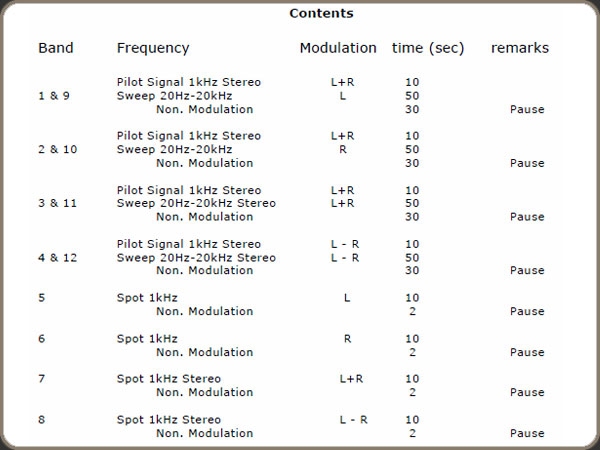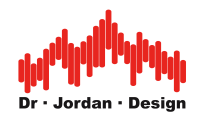How can you check the correct function of your record player?
- You send your valuable device to an authorized dealer and let them check your drive. In practice, this is complex and time-consuming and includes a high transport risk.
- You buy a test record, record one track of this LP and send us this .wav file. You will receive an automatic evaluation from us.
Clearaudio's test record
There are a number of test records on the market, some of them are of very high quality, for example from Bruel & Kjaer. However, most of them are historical and only available used. The remaining quality is therefore unclear.
The Clearaudio test record is a new production and therefore shows a defined behavior. That is why we have specialized in our evaluation of this LP.
This LP includes a recording with a pilot tone of 1kHz and a sweep of 20-20kHz.

Which parameters can we evaluate?
-
Frequency response of the entire system from the pickup to the output of your phono amp.
-
number of revolutions
-
Fluctuations (Wow&Flutter)
-
crosstalk
-
Distortions over frequency
What do you need for a measurement of your record player?
- Clearaudio's test record
- A PC/laptop with a suitable sound card
- A recording of the sweep signal (approx. 5min)
- Send us the .wav file (about 90MB)
- You will receive the automated evaluation from us.
Analysis of the recordings of the Clearaudio test record
The track starts with a pilot tone of 10s. With this pilot tone, frequency deviations can already be determined and the levels can be calibrated. This is followed by a short break. Then the "sweep" starts by a sliding tone of 20-20kHz within 50s. This sweep is distributed to the two channels in different recordings. There are recordings with only one channel each, as well as the sum and difference on both channels. In this way, the crosstalk can be determined.
Let's first look at the recorded level in dB over time.
_RMS_vs_time.png)
You can clearly see the relatively constant pilot tone, the pause and the sweep.
Now we measure the instantaneous frequency and display it again over time.
_freq_vs_time.png)
Please note that the Y (frequency axis) is logarithmic. In this representation, the sweep is linear. This means that the frequency within the sweep - as usual in audio technology - is increased exponentially.
First, let's take a closer look at the pilot tone. In the overview it appears constant at 1000Hz, but....
_pilot_freq_vs_time.png)
You can see a deviation of about 0.6% (994Hz instead of 1000Hz) and a fluctuation that is also known as Wow&Flutter .
The frequency response of the turntable
From the sweep, the level can be plotted against the instantaneous frequency. This is the classic frequency response.
You can use it to check the pickup and RIAA equalization.
_freq_response.png)
3D representation: the spectrogram
The spectrogram is a useful tool to show level versus time AND frequency.
_spectrogram.png)
You can see the signal curve in an overview.
In the following image, we present the pilot tone as a classic 3D image. Here you can clearly see the harmonics at 2Hz, 3kHz, etc.
_pilot_3D.png)
In an ideal transmission system it would only show the tone at 1kHz. Harmonics are generated by non-linear effects.
A normal spectral representation (FFT) is used for measuring
_pilot_FFT.png)
The first harmonic at 2kHz is -48dB with respect to the pilot tone. The distortions are orders of magnitude below those of modern digital recording systems. These achieve distortions below -120dB (e.g. APX555 from Audio Precision). That's 70dB less, or as a voltage ratio of 1:3000. Advanced digital recording systems have 3000 times less distortion. But it is probably precisely these distortions that cause the "warm sound" for the enthusiasts.
At this point we don't want to have a discussion for or against an LP vs. a digital recording. Our goal is that your turntable achieves the best possible results.
crosstalk
The test signal is recorded on the test record in such a way that the pilot tone is present on both channels. However, the sweep is only on one channel. So there should be silence on the other channel. This is not the case, however, since crosstalk occurs due to the mechanical system.
This crosstalk can already be recognized from a simple level-time curve.
_2ch_level_vs_time.png)


